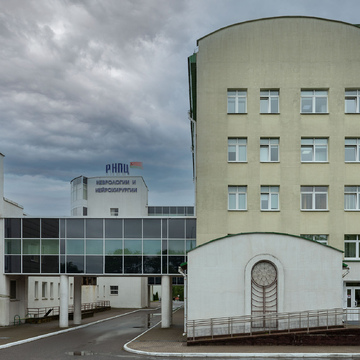
Microsurgical neurolysis is a surgical procedure aimed at releasing a peripheral nerve from cicatricial and adhesive changes, surrounding tissues or pathological formations that compress it. The main goal of the operation is to restore normal nerve function, eliminate pain, improve sensitivity and motor activity.
Indications for microsurgical neurolysis
The procedure is indicated in the following conditions:
- Tunnel syndromes: carpal, elbow, tarsal and others.
- Post-traumatic scars: nerve compression due to injury or surgery.
- Compression of a nerve by a tumor or other formations.
- Inflammatory processes: chronic neuritis leading to nerve compression.
- Neuropathies caused by prolonged compression of nerves.
Types of neurolysis
- External (epineural) neurolysis. Removal of scars or pathological tissues around the nerve, without damaging its structure. Used when the nerve is compressed by surrounding tissues.
- Internal (endoneural) neurolysis. Removal of adhesions inside the nerve, separation of individual bundles. Used for more serious nerve damage.
- Combined. Combination of external and internal neurolysis for complex cases.
Preparing for surgery
- Diagnostics: electromyography (EMG), ultrasound of the nerve , MRI of soft tissues
- Pre-operative examinations: general and biochemical blood tests, coagulogram , neurologist consultation.
Progress of the operation
- Anesthesia: local or general anesthesia depending on the volume and complexity of the intervention.
- Surgical approach: An incision is made over the affected area to expose the nerve.
- Nerve release: removal of scar tissue, adhesions, pathological formations. With internal neurolysis, the bundles inside the nerve are separated.
- Microsurgical techniques: use of an operating microscope and fine instruments to minimize trauma.
- Wound closure: layer-by-layer tissue suturing. Drainage installation if necessary.
Postoperative period
- Immobilization: fixing a limb or area of intervention to reduce stress.
- Drug therapy: painkillers (NSAIDs), neuroprotectors to speed up recovery, B vitamins to improve the regeneration of nerve tissue.
- Physiotherapy: electrophoresis, magnetic therapy to improve blood circulation.
- Rehabilitation: therapeutic exercise to restore motor activity. Massage to relieve muscle tension.
Microsurgical neurolysis is an effective method of treating compression and traumatic nerve injuries. Modern microsurgical technologies provide a high level of safety and allow the restoration of normal nerve functions, provided that medical care is sought in a timely manner.
In Belarus, microsurgical neurolysis is performed in modern medical centers using advanced equipment. Qualified specialists provide an individual approach to each patient. Affordable cost of services makes Belarus an attractive destination for treatment of patients from different countries.

